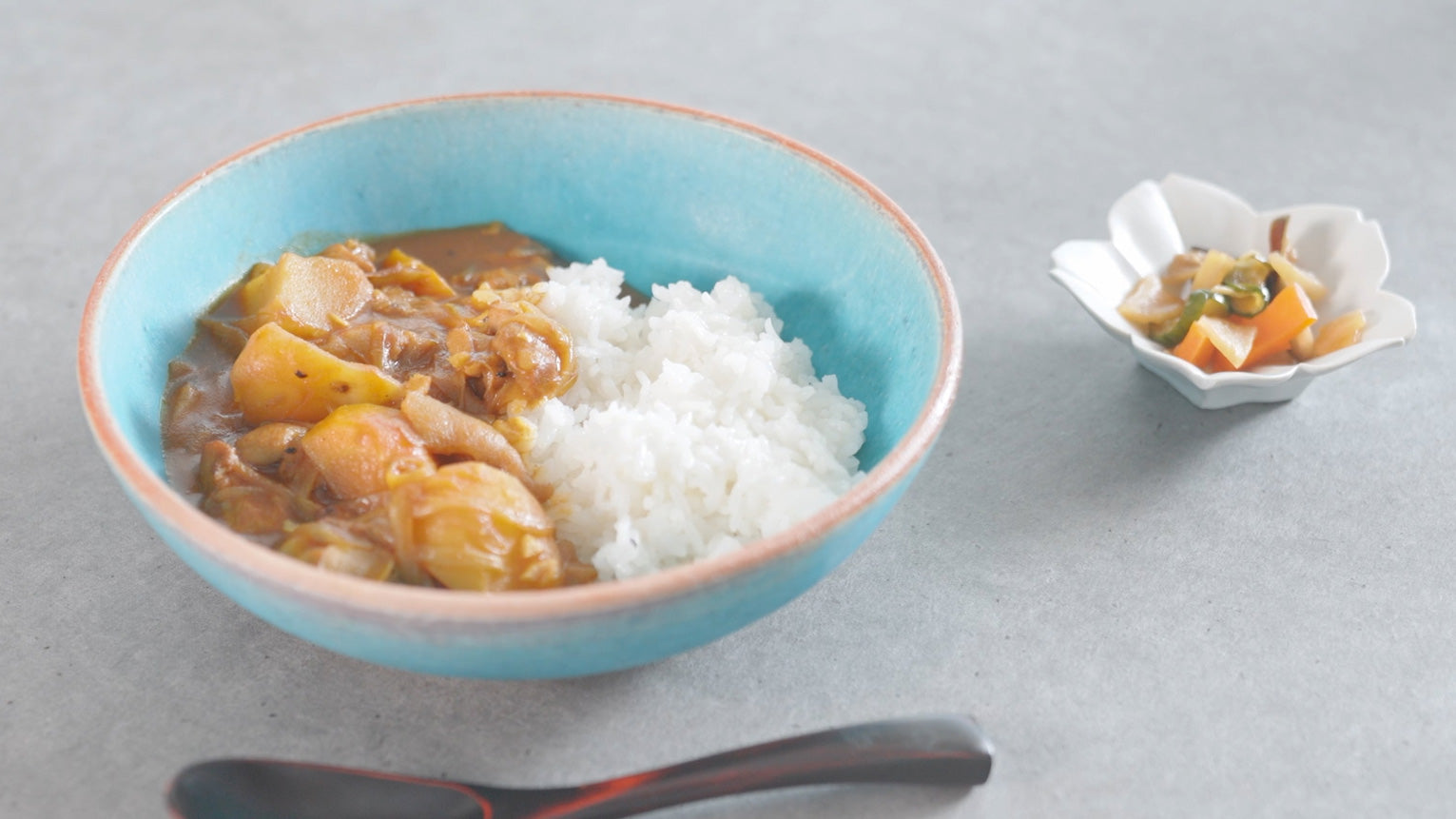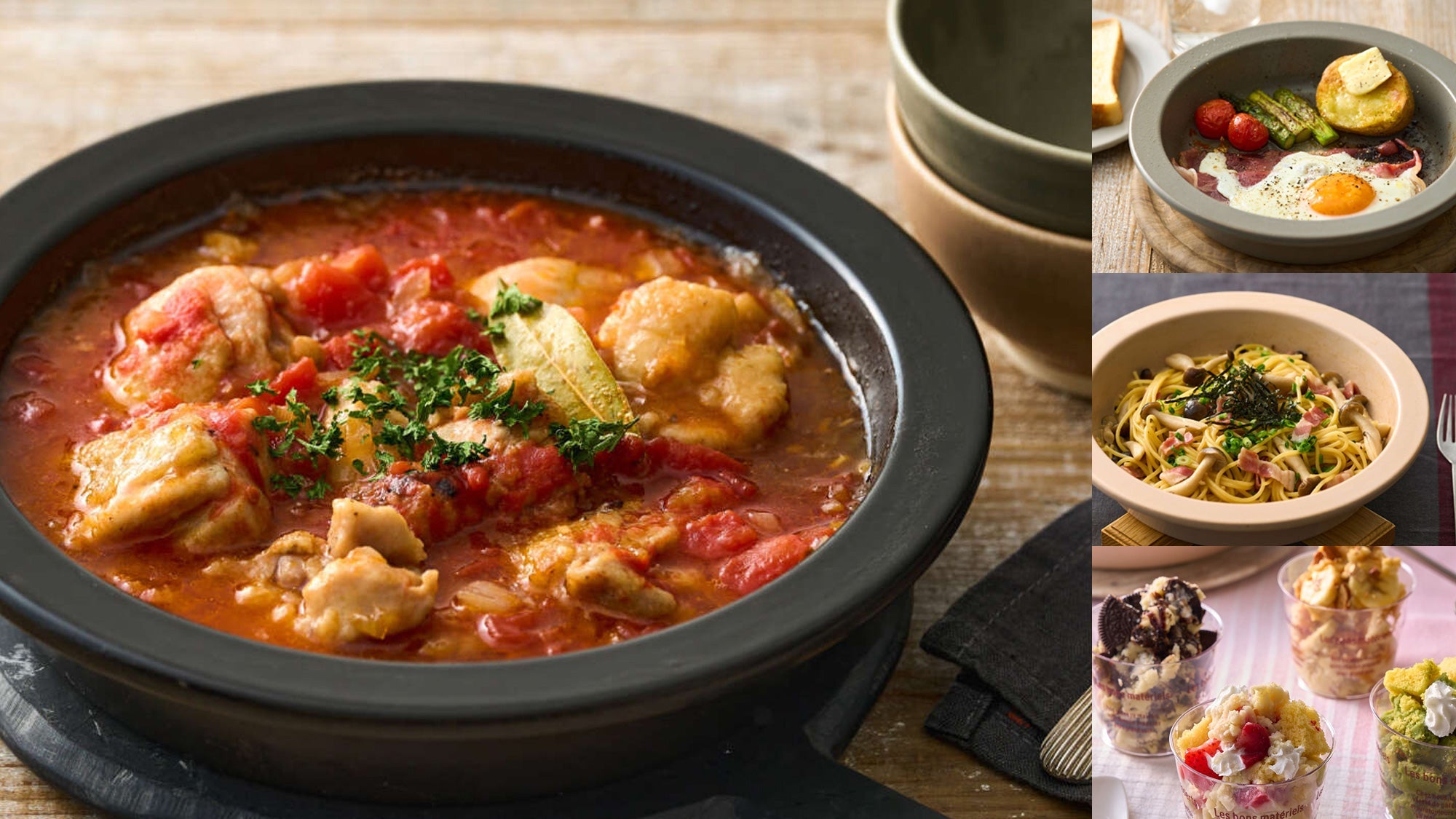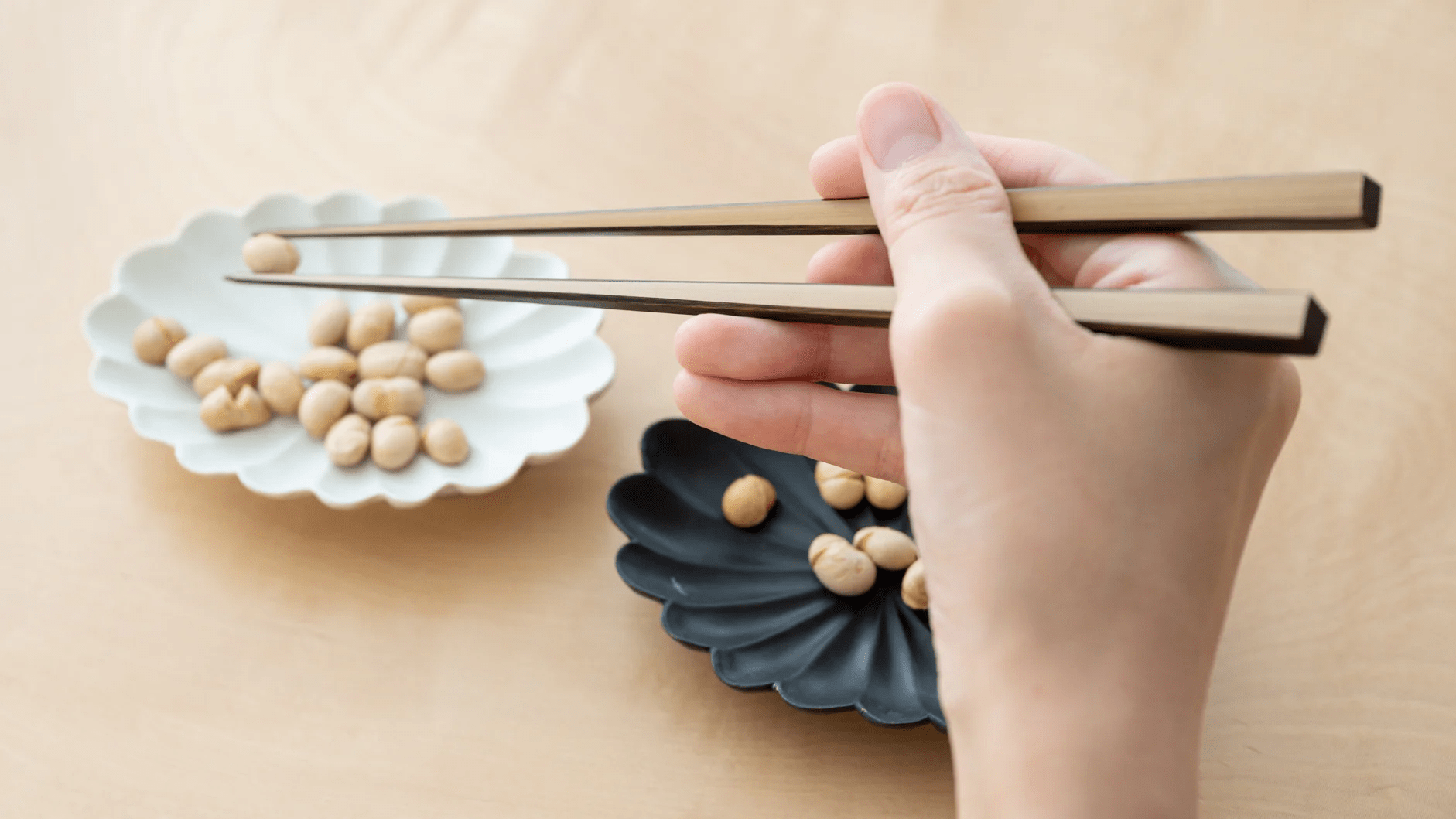
Eat Like Your Favorite Ghibli Characters
Written by Team MUSUBI
The timeless aesthetic, expressive characters, and deep stories are at the core of Studio Ghibli’s universal appeal worldwide. Hayao Miyazaki’s imaginative and profound films have allowed us to reflect on the lives of people in other worlds. What’s more, Ghibli features some of the most vivid representations of epicurean delight, with Miyazaki’s animated food seeming so real you can taste it. And while it is difficult to recreate such gluttonous feasts as the ones in Spirited Away, we have selected five simple Ghibli-esque meals that can be prepared with the right ingredients and a few similar plates, bowls, and cups. Why not emulate your beloved character and eat to your heart’s content!
table of contents
My Neighbor Totoro—Satsuki’s Bento

Family dynamics is one of the themes explored in Miyazaki’s most beloved animation “My Neighbor Totoro.” Despite their bickering, Satsuki and Mei prove to be siblings whose differences are no match for their heartfelt sisterly bond. In a notable scene, Satsuki prepares a simple bento for Mei. It can be said that the homemade bento exemplifies a particularly Japanese sense of familial affection towards those we hold dearest. It goes beyond a simple packed lunch. The ingredients are usually prepared with care and concern for nutritional value, and often assembled in an aesthetic or creative way.

If you wish to recreate this movie scene, we highly recommend using a shiny red box, just like Mei’s. This oval bento box uses the nunome lacquerware technique of applying lacquer over a piece of cloth. It showcases the striking depth of color and textural variation created by traditional Japanese lacquerware techniques. The removable divider is also very practical. After packing the bento box with freshly steamed rice, place on top of it a single pan-fried shishamo, a small, silver variety of smelt, native to Hokkaido. On one side you can place an umeboshi, or pickled plum, and fill the other half of the bento with bright green edamame and cute pink sakura denbu, a fluffy flaked fish condiment made from codfish.
From Up on Poppy Hill—Japanese Breakfast


From Up on Poppy Hill is a coming-of-age story of a young girl and boy set in 1960s Yokohama and explores themes such as the swift modernization of Japan in the second half of the 20th century. We are introduced to hardworking Umi in the opening scene as she prepares for the day under the accompaniment of The Breakfast Song (Asagohan no Uta). She skillfully prepares a simple breakfast for the members of her household. A slice of ham and medamayaki, or sunny-side-up egg, are the main part of the meal with some bright green shredded lettuce on the side. And of course, no Japanese breakfast would be complete without a bowl of rice and miso soup.

Umi dexterously serves all her family members, but you can recreate this breakfast even if you are eating alone. First, you will need a couple of bowls. For miso soup, a classic lacquerware bowl is ideal, and to match the aesthetic of the film, why not use one of the bowls in this oryoki set? With its red interior and black exterior, it is the quintessential Japanese-style lacquerware bowl. Next you need a rice bowl, such as this one from Arita Porcelain Lab, which features a delicately curved white base below a pearl blue exterior. For your main dish, there are many rectangular plates to choose from, but we recommend something casual that conveys the atmosphere of a simple breakfast, such as Baizan Kiln’s white Tobe ware plate which features a wide rim decorated with radiating indigo lines reminiscent of the morning sun’s rays.
Kiki’s Delivery Service—Kiki’s Breakfast

Kiki’s large red bow and magical abilities as a witch make her a favorite character of many Studio Ghibli fans, and a great costume choice for cosplay or Halloween. The themes of gaining independence and overcoming self-doubt as a young person are surely why this Ghibli classic resonates with so many people. But its aesthetic motifs of the cozy Gutiokipanja bakery and the scenery inspired by northern Europe create an unforgettable world filled with lovely details.

Despite the standard Japanese kitchen often lacking an oven, Japan has developed a special love for baked goods. But even if one does not have the freedom to bake at home, anyone can make some hotcakes like Kiki’s special browned pancakes. Add some sausage and butter on the side, and serve on a large white plate, like this Ivory White Mino Ware Round Plate. Complete your breakfast table setting with a Hasami ware Yunomi tea cup decorated with a black cat, just like Kiki’s trusty companion, Jiji.
Ponyo—Sosuke and Ponyo’s Ramen

Loosely based on the classic tale of The Little Mermaid, Miyazaki’s Ponyo tells the story of a goldfish princess who wishes to become human. In one of the most delightful scenes of the film, we see Satsuke’s mother serve ramen to her son and his aquatic friend. A foreigner in a foreign land, Ponyo’s reaction is unforgettable as she is astounded by the appearance, taste and notably the temperature of this hot and filling staple of Japanese cuisine.

The scene features a very recognizable Japanese pattern of straight vertical lines inspired by the plant tokusa, known in English as rough horsetail. Beloved since the Edo period (1603 CE–1868 CE), this pattern is regarded as a symbol of growth and prosperity, since it grows unwaveringly upwards. It can be found on many Japanese tableware items. For your homemade Ponyo-inspired ramen we suggest using one of these two donburi bowls that closely resemble the one in the animated modern classic. And don’t forget to top your hot noodles with lots of toppings such as green onions and boiled egg.
Princess Mononoke—Ashitaka’s Okayu

Upon suffering a demon’s curse, Ashitaka, one of the film’s protagonists, ventures into the forest where he meets a monk by the name of Jiko. The monk offers him a traditional rice porridge called okayu, which is often eaten by those who are ill, recovering, or are otherwise frail, such as the elderly. With its soft texture, it is easy to eat and digest, so it is considered to be a healing food.

To emulate this scene, we suggest using a red lacquerware bowl, such as one of the many produced by Gato Mikio. They are available in a number of unique shapes, but their most stunning feature is the intricate grain visible underneath the lacquer. This emphasis on the natural texture of wood resonates with those who deeply feel the themes of connection and tension between nature and humanity that are explored in Princess Mononoke.
Beyond its stunning animation, Ghibli movies capture the hearts of people for the fascinating way they weave the otherworldly and magical with deep rooted Japanese sensibilities and how they often incorporate familiar dishes such as ramen or bento. Recreating some of these recipes is not only a great way to connect with a fictional character that you relate to, but also a creative way to experience a very real part of Japanese cultureーits absolute obsession with food.







2 comments
That’s so wonderful to hear! Thank you for your kind feedback!
Team Musubi
This is a marvelous way/connection to see a product! Delightful!
Sandra Wilson
Leave a comment
This site is protected by hCaptcha and the hCaptcha Privacy Policy and Terms of Service apply.